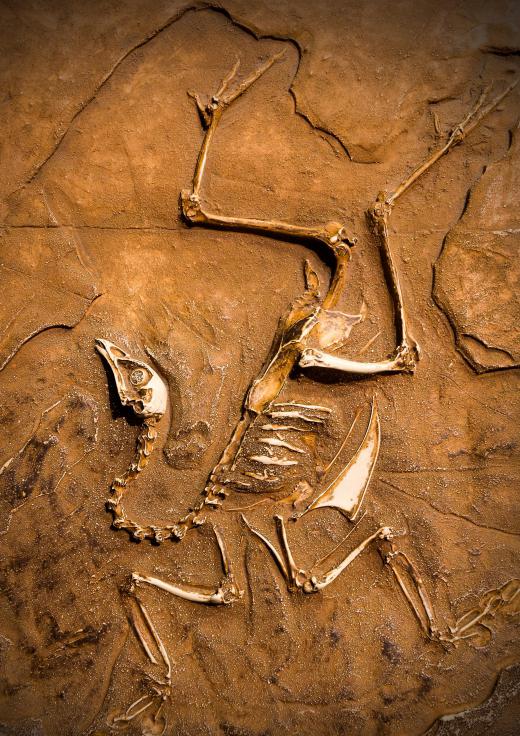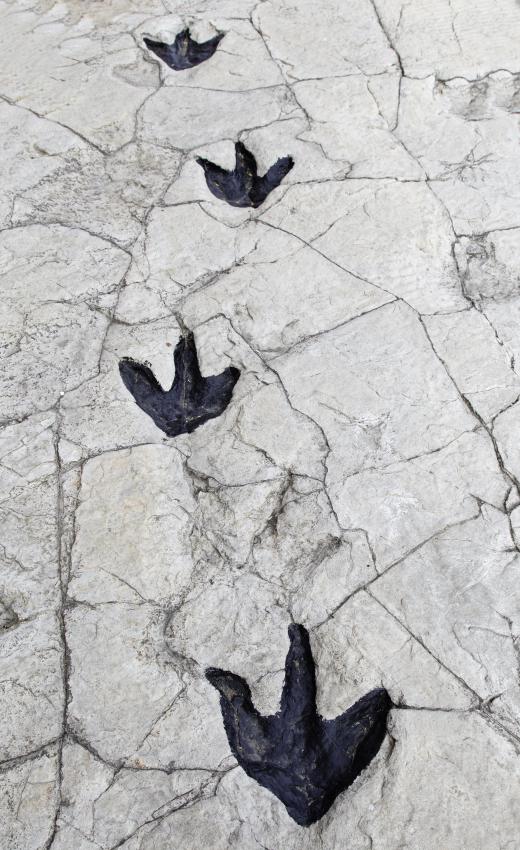What are the Most Important Historical Fossil Finds?
 Michael Anissimov
Michael Anissimov
There are hundreds or even thousands of highly important fossil finds, but a few stand out as forever changing the way we look at a large taxon of animals or epoch of palentological history.
The fossil finds that stand out the most are 1) the discovery of a mosasaur (aquatic reptile) by Georges Cuvier in 1808, which ushered in the paleontological "Age of Reptiles", 2) discoveries of giant armadillos and giant sloths by Darwin in the 1850s, which helped him formulate his Origin of Species, 3) the discovery of the dinosaur-bird Archaeopteryx in 1861, which provided crucial support for that theory, 4) the renaissance of fossil-hunting at the Cambrian-aged Burgess shale in the 1970s and 1980s, which revealed the forerunners of most modern animal phyla, and 5) the realization of the importance of the Ediacaran-aged Mistaken Point Assemblage in Newfoundland, which revealed well-preserved fossils of some of the earliest multicellular animals known.

Though fossil finds have been occurred since antiquity, it wasn't until the careful work of Georges Cuvier in the 1790s that scientists came to accept that fossils represented ancient animals, many of which are now extinct. The world had difficulty accepting extinction, due to philosophical and theological reasons, up to that point. The early 19th century was a renaissance of fossil finds, with all major groups of dinosaurs and many fossil fish, invertebrates, and plants found during this time. Adolph Brongniart excavated important plant fossils and split the history of plant life into four eras: spore-based (lichens, mosses, ferns, etc.), conifers, cycads, and the modern era of flowering plants.

The most important historical fossil finds in recent times are those concerned with the dawn of animal history -- from 520 million years ago and older, all the way up until about 600 million years ago, when multicellular organisms first appear. The most fascinating finds have emerged from the Burgess Shale, in western Canada, and Mistaken Point, in eastern Canada. The Burgess Shale reveals a well-preserved early world of anthropods, mollusks, sponges, and annelids, while Mistaken Point represents an even earlier era, where almost all animals were stationary frond and bag-shaped filter-feeders and algal symbionts anchored to the sea floor. These were probably cnidarians, like modern-day sea pens, or even more primitive offshoots of the animal kingdom.
AS FEATURED ON:
AS FEATURED ON:













Discussion Comments
@irontoenail - I think, for the most part, anything that we would consider to be relatively important scientifically would have an abundance of fossils in the world, because they would have been a successful organism. So even if a few great finds have been lost over the years, that doesn't mean that the same creature or plant will never be discovered. Only that that particular fossil is gone.
@Iluviaporos - Even before they knew what fossil finds were, people would still marvel at their beauty and try to preserve them. And for the most part there aren't that many fossils just lying around out in the open, so there might not have been that many found in the days before we started going looking for them.
Although I have heard that fossilized dinosaur bones were once used as a traditional medicine in some parts of the world, with the belief that they were once dragons or some other kind of mythical beast. So perhaps I'm being overly optimistic.
The original archaeopteryx is such a gorgeous fossil as well. It must have been absolutely thrilling to be the first one to discover it, even if you didn't know the implications about dinosaurs being the ancestors of modern birds.
I can't help but wonder how many important fossils haven't been found yet, or worse, were found but weren't seen as important and were destroyed or otherwise lost. It's only been in the last few hundred years that people realized the importance of any fossils, but I'm sure we've been discovering them throughout human history.
Post your comments